May 2019
By Paul Kerr
Finding ways to roll back nuclear weapon programs, particularly in countries such as North Korea, has vexed U.S. and world leaders for years, but there have been several cases in which states completely ended their nuclear weapons programs.
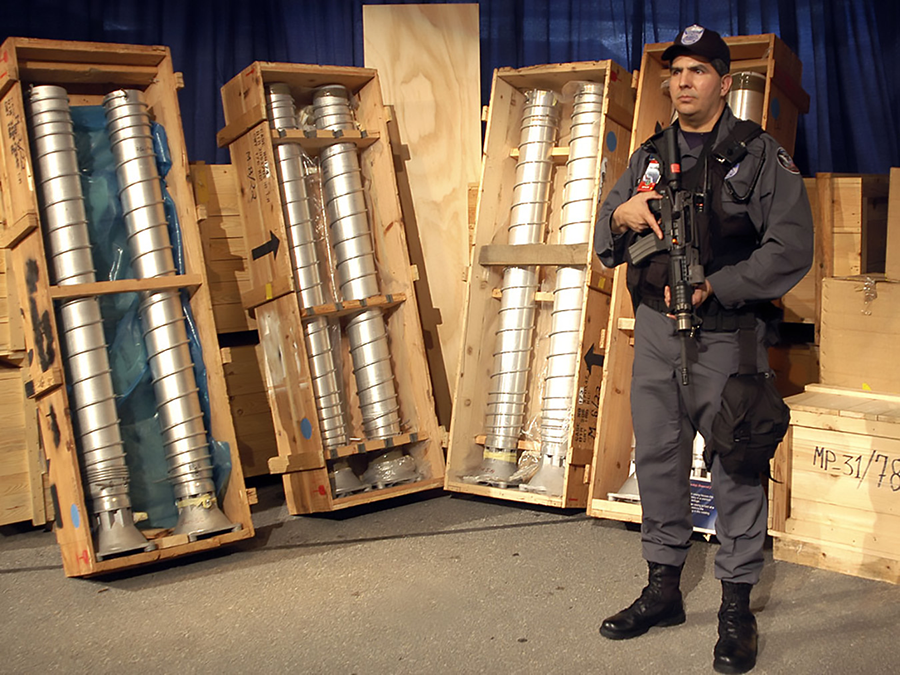 For example, South Africa destroyed its nuclear weapons. Belarus, Kazakhstan, and Ukraine possessed nuclear weapons and transferred the warheads to Russia, a nuclear-armed state. Iraq and Libya ended nuclear weapons development programs. Other governments, including those of South Korea and Taiwan, abandoned the pursuit of nuclear weapons in response to U.S. pressure.
For example, South Africa destroyed its nuclear weapons. Belarus, Kazakhstan, and Ukraine possessed nuclear weapons and transferred the warheads to Russia, a nuclear-armed state. Iraq and Libya ended nuclear weapons development programs. Other governments, including those of South Korea and Taiwan, abandoned the pursuit of nuclear weapons in response to U.S. pressure.
A review of these cases, South Africa and Libya in particular, reveals three salient observations that could support the development of robust and applicable tools to address current and future nonproliferation problems. First, voluntary state actions have effectively produced confidence in the peaceful nature of their nuclear programs. Second, existing institutions have been indispensable for managing solutions to proliferation cases. Third, no extraordinary restrictions on peaceful nuclear technology have been needed to provide the confidence-building transparency that reduces concerns about nuclear programs.
In the Beginning, the NPT
Early nonproliferation efforts focused on the 1968 nuclear Nonproliferation Treaty (NPT), which permits its non-nuclear-weapon states-parties to possess civilian nuclear programs under certain constraints. Boasting 191 parties today, the treaty provides for non-nuclear-weapon states’ right to “develop research, production and use of nuclear energy for peaceful purposes” while forgoing the acquisition or development of nuclear weapons.
The treaty represented a watershed moment for the International Atomic Energy Agency (IAEA), with which all non-nuclear-weapon treaty states must conclude a comprehensive safeguards agreement. Such agreements empower the agency to monitor nuclear activities to ensure that nuclear materials, particularly uranium and plutonium, in peaceful nuclear activities are not diverted to nuclear weapons programs. Prior to the NPT’s 1970 entry into force, the agency applied safeguards to specific nuclear facilities, but the treaty-required comprehensive safeguards agreements enable the IAEA to assess all nuclear material in a country, as well as nuclear facilities and associated design information.
The IAEA safeguards system has evolved since receiving this larger role. For example, the agency discovered major shortcomings in the system after learning that Iraq had pursued a significant nuclear weapons program prior to the 1991 Persian Gulf War while in compliance with its IAEA comprehensive safeguards agreement. The agency subsequently implemented Programme 93+2 to improve its ability to detect undeclared nuclear facilities and activities. This exercise produced several significant outcomes for safeguards implementation that are particularly germane to other denuclearization cases.
Perhaps the most important of these outcomes is the Model Additional Protocol, approved by the IAEA Board of Governors in 1997, which complements the NPT-required comprehensive safeguards agreements.1 Such protocols, which are adopted voluntarily, augment IAEA authority to inspect certain nuclear-related facilities and require states to provide the agency with additional information about their nuclear programs.
In addition, the IAEA board decided in 1992 that states with comprehensive safeguards agreements are obligated to provide the agency with design information for new nuclear facilities “at the time of the decision to construct, or to authorize the construction” of such facilities.2 The IAEA had previously required states to provide this information at least 180 days “before the introduction of nuclear material into the facility.”3 Lastly, beginning in 1999, the IAEA started to draw for some states the “broader conclusion” that all of a state’s nuclear material “remains in peaceful activities.”4
The Two Most Relevant Cases
South Africa
During the late 1970s and the 1980s, South Africa built several nuclear explosive devices that used weapons-grade highly enriched uranium (HEU). The government ended its nuclear weapons program in 1989 and completed dismantling the weapons by September 1991. After acceding to the NPT in July 1991, South Africa concluded a comprehensive IAEA safeguards agreement two months later.5 The country previously had no legal obligation to eliminate its nuclear weapons program or place all of its nuclear facilities under IAEA safeguards.6 An IAEA General Conference resolution in September 1991 requested IAEA Director-General Hans Blix to “verify the completeness of the inventory of South Africa's nuclear installations and material.”7 After investigating the country’s program, the IAEA reported in 1993 that South Africa’s declared uranium-enrichment production was consistent with the agency’s findings. The IAEA “found no indication to suggest that there remain any sensitive components of the nuclear weapons program which have not been either rendered useless or converted to commercial non-nuclear applications or peaceful nuclear usage.”8
Although South Africa “had no obligation to declare…the past purpose” of the nuclear material that it had placed under safeguards,9 the IAEA was obligated to account for all of the nuclear material that the country had produced. Agency inspectors evaluated South Africa’s declarations pursuant to its safeguards agreement and verified that the government had dismantled its weapons program. During the investigation, agency officials inspected facilities that produced nuclear material, such as enrichment facilities, and received access to the country’s nuclear weapons facilities, such as those devoted to building, storing, and testing nuclear explosive devices. According to the IAEA, South Africa cooperated fully with the investigation by, for example, issuing a “standing invitation” to the agency that provided “access to any location or facility associated with” the weapons program.10 IAEA officials later described South African government officials’ “active co-operation...in arranging for access to all facilities that the [IAEA inspection] team requested to visit.”11
Today, the IAEA implements safeguards in South Africa just as it does in other NPT non-nuclear-weapon states with comparable nuclear programs. The government concluded an additional protocol to its comprehensive safeguards agreement in 2002, and the IAEA later drew the broader conclusion regarding South Africa’s nuclear material. The country is not subject to any restrictions on its nuclear program beyond those contained in the NPT and the government’s safeguards agreement. For example, South Africa, unlike Iran under the 2015 Joint Comprehensive Plan of Action (JCPOA) and Iraq, was not required to dismantle, abandon, or limit its uranium-enrichment facilities or related research and development programs. South Africa operates safeguarded nuclear reactors and has discussed resuming its enrichment program.12
Libya
Following months of negotiations with the United Kingdom and United States, Libya publicly revealed in December 2003 that it had pursued a clandestine nuclear weapons program. The government had imported nuclear material, design information, components for a uranium-enrichment program, and design information related to nuclear weapons development, but the country never developed nuclear weapons or the ability to produce them. Unlike South Africa, Libya was party to the NPT with a comprehensive safeguards agreement and had concealed its acquisitions from the IAEA.
After its announcement, Tripoli worked with London and Washington to remove documents, equipment, and material associated with its covert nuclear program and asked the IAEA to “confirm, through verification, that all of its nuclear activities would henceforth be under safeguards and used exclusively for peaceful purposes.”13 The IAEA witnessed the removal of items related to Libya’s enrichment program to the United States and conducted an investigation of the government’s undeclared nuclear activities.14 IAEA Director-General Mohamed ElBaradei reported in September 2008 that the IAEA considered Libya’s unreported nuclear activities as “no longer outstanding.”15
The IAEA used no additional legal authority to carry out the verification mission in the country; Libya signed an additional protocol in March 2004, but it did not enter into force until 2006. Moreover, ElBaradei reported that Libya had provided the IAEA with “unrestricted and prompt access, beyond that required under its safeguards agreement and additional protocol, to those locations, information and individuals deemed necessary by the agency to fulfill its verification requirements.”16 As with South Africa, Libya has no extraordinary restrictions on its nuclear program, and the IAEA has drawn the broader conclusion with respect to nuclear material in the country.
Other Notable Cases
Iraq
The IAEA’s experience conducting its UN-mandated inspection and monitoring mission in Iraq is anomalous. Although the UN Security Council, in the aftermath of Iraq’s defeat in the 1991 Gulf War, subjected the government to the most intrusive inspection and monitoring scheme ever devised, the inspectors’ efforts, despite being generally successful, were insufficient to prevent the 2003 U.S.-led invasion of the country.17
 Following the 1991 war, the council adopted a series of resolutions requiring Baghdad to eliminate its nuclear weapons program and implement other steps to prevent the program’s reconstitution. These mandates supplemented Iraq’s NPT and safeguards agreement obligations. To verify Iraq’s compliance with these requirements, the resolutions augmented IAEA authority with powers that considerably exceeded those that the agency possessed under Iraq’s safeguards agreement.18 For example, although comprehensive safeguards agreements only require governments to declare nuclear material and associated facilities and design information, Resolution 687, which the Security Council adopted in April 1991, required Iraq to submit a much more expansive declaration to the UN secretary-general and the IAEA director-general. The resolution also required Baghdad to destroy certain components of its nuclear weapons program and allow the IAEA to remove specified nuclear materials from the country.19 In addition, Resolution 715 gave IAEA inspectors extraordinary authorities, such as the right to conduct unannounced short-notice inspections “at any time and without hindrance, of any site, facility, area, location, activity, material or other item in Iraq” and the right to “stop and inspect vehicles, ships, aircraft or any other means of transportation” within the country. Other resolutions also imposed extraordinary restrictions on Iraq’s nuclear program. For example, Resolution 707 required Baghdad to “[h]alt all nuclear activities of any kind, except for use of isotopes for medical, agricultural or industrial purposes,” until the council determined that Iraq had fully complied with Resolution 687’s requirements, as well as its IAEA safeguards obligations.
Following the 1991 war, the council adopted a series of resolutions requiring Baghdad to eliminate its nuclear weapons program and implement other steps to prevent the program’s reconstitution. These mandates supplemented Iraq’s NPT and safeguards agreement obligations. To verify Iraq’s compliance with these requirements, the resolutions augmented IAEA authority with powers that considerably exceeded those that the agency possessed under Iraq’s safeguards agreement.18 For example, although comprehensive safeguards agreements only require governments to declare nuclear material and associated facilities and design information, Resolution 687, which the Security Council adopted in April 1991, required Iraq to submit a much more expansive declaration to the UN secretary-general and the IAEA director-general. The resolution also required Baghdad to destroy certain components of its nuclear weapons program and allow the IAEA to remove specified nuclear materials from the country.19 In addition, Resolution 715 gave IAEA inspectors extraordinary authorities, such as the right to conduct unannounced short-notice inspections “at any time and without hindrance, of any site, facility, area, location, activity, material or other item in Iraq” and the right to “stop and inspect vehicles, ships, aircraft or any other means of transportation” within the country. Other resolutions also imposed extraordinary restrictions on Iraq’s nuclear program. For example, Resolution 707 required Baghdad to “[h]alt all nuclear activities of any kind, except for use of isotopes for medical, agricultural or industrial purposes,” until the council determined that Iraq had fully complied with Resolution 687’s requirements, as well as its IAEA safeguards obligations.
Despite Iraq’s initial efforts to conceal its nuclear weapons program from inspectors, the IAEA successfully completed most of its tasks with respect to destroying, removing, and “rendering harmless” the program’s elements by the end of 1992.20 Although the agency withdrew its inspectors in December 1998 following a considerable period of decreased Iraqi cooperation, the IAEA had been “able to draw a coherent picture of Iraq’s past nuclear weapons program, and to dismantle what was known of that program.”21 This success, however, did not resolve concerns that Iraq was still pursuing nuclear and prohibited weapons. The opacity exacerbated by the inspectors’ 1998 withdrawal increased existing suspicion caused by Iraq’s initial laggard compliance with the inspectors. Inspectors returned to Iraq shortly after the Security Council adopted Resolution 1441 in November 2002 and found no evidence of a revived Iraqi nuclear weapons program. Nevertheless, the United States led an invasion of the country in March 2003 shortly after the inspectors left the country.22 In 2010, Resolution 1957 repealed Resolution 687’s requirements, and Iraq is currently subject only to its comprehensive safeguards agreement and the additional protocol to that agreement. The IAEA has drawn the broader conclusion with respect to nuclear material in the country.
Belarus, Kazakhstan, and Ukraine
The 1991 dissolution of the Soviet Union, an NPT-recognized nuclear-weapon state, created a different situation. Three Soviet successor nations (Belarus, Kazakhstan, and Ukraine) found themselves with strategic nuclear weapons on their territory. After extended discussions with Russia and the United States, the three agreed to adhere to the NPT as non-nuclear-weapon states within “the shortest possible time.” Belarus acceded to the treaty in 1993; the other two followed suit in 1994. Although the three countries eventually concluded comprehensive safeguards agreements with the IAEA (Belarus and Kazakhstan in 1995, Ukraine in 1998), the agency was not involved in verifying the weapons’ destruction. Instead, the three countries transferred the weapons’ warheads to Russia, where they were subject to U.S.-Russian strategic arms control treaty inspections, and the countries received U.S. bilateral assistance for destroying the delivery vehicles.23
Iran and the Joint Comprehensive Plan of Action
The JCPOA was designed to resolve the international community’s suspicions that Iran, a non-nuclear-weapon state with comprehensive IAEA safeguards, was pursuing a nuclear weapons program. These suspicions were well grounded by a number of factors, particularly the exposure of Tehran’s past nuclear weapons program and its noncompliance with its safeguards agreement. The JCPOA was not necessary to dismantle a nuclear weapons program because Iran never developed such weapons, and the U.S. intelligence community assesses that Iran halted that program, to which Tehran has never admitted, in December 2003.
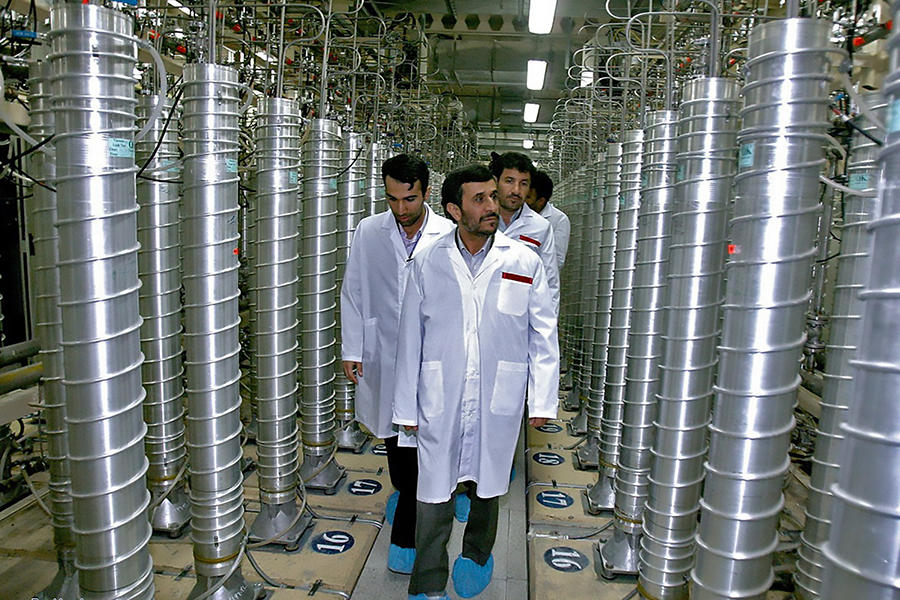 The JCPOA not only reaffirmed Iran’s NPT and safeguards obligations, but also incorporated other important elements of the IAEA safeguards system in order to prevent Iranian reconstitution of its weapons program. For example, the agreement requires Iran to implement its additional protocol even though Iran has not yet ratified it—states normally conclude such protocols voluntarily—and to resume providing the IAEA with design notification of new nuclear facilities in accordance with the 1992 IAEA Board of Governors changes; Tehran had stopped providing this information in 2007.24 The JCPOA also states that the IAEA will pursue drawing the broader conclusion that all nuclear material in Iran is being used exclusively for peaceful purposes, a process that will likely entail investigating any unresolved questions about past Iranian nuclear activities.25
The JCPOA not only reaffirmed Iran’s NPT and safeguards obligations, but also incorporated other important elements of the IAEA safeguards system in order to prevent Iranian reconstitution of its weapons program. For example, the agreement requires Iran to implement its additional protocol even though Iran has not yet ratified it—states normally conclude such protocols voluntarily—and to resume providing the IAEA with design notification of new nuclear facilities in accordance with the 1992 IAEA Board of Governors changes; Tehran had stopped providing this information in 2007.24 The JCPOA also states that the IAEA will pursue drawing the broader conclusion that all nuclear material in Iran is being used exclusively for peaceful purposes, a process that will likely entail investigating any unresolved questions about past Iranian nuclear activities.25
The agreement imposed a number of temporary monitoring and inspection requirements, as well as physical constraints, on Iran’s civil nuclear program, none of which are required by comprehensive safeguards agreements or additional protocols.26 Moreover, the JCPOA prohibits Iran indefinitely from engaging in a number of dual-use activities that could contribute to developing nuclear weapons.
The UN Security Council played a role with Iran during the years preceding the JCPOA and in the agreement itself. The council adopted a series of resolutions between 2006 and 2010 that imposed a number of requirements on Iran, most of which Tehran ignored. For example, these resolutions included a requirement that Iran suspend most of its nuclear programs and conclude an additional protocol. The council adopted a resolution in July 2015 that mandated Iranian compliance with the JCPOA and terminated the previous resolutions’ requirements.
How the Cases Apply
The South African and Libyan examples are most applicable to future nonproliferation problems for at least two reasons. First, those two governments’ NPT status most closely resembles that of most countries. Except for the NPT-recognized nuclear-weapon states (China, France, Russia, the United Kingdom, and the United States) and the treaty’s nonsignatories possessing nuclear weapons (India, Israel, and Pakistan), most states are NPT non-nuclear-weapon states.27 The cases of Belarus, Kazakhstan, and Ukraine have limited applicability because those countries had the unique status of new states that inherited weapons from a nuclear-weapon state. Second, the Iraq case similarly has limited relevance because the Security Council imposed the extraordinary inspection, disarmament, and other conditions under circumstances that policymakers cannot easily replicate.
Governments grappling with future nonproliferation problems will obviously decide the type and degree of assurances that they will demand, in accordance with the situation’s unique circumstances. Experience reveals, however, that institutions are of vital importance for managing proliferation problems and that coercive solutions to those problems have serious limitations. This may seem obvious, but governments and outside observers have often ignored these notions. Indeed, a greater appreciation for UN inspectors’ work in Iraq would have obviated the need for the use of military force to eliminate concern with respect to a suspected Iraqi nuclear weapons program.
In general, the international community accepts the IAEA safeguards system’s mandatory and voluntary elements as adequate assurance that NPT non-nuclear-weapon states are not pursuing nuclear weapons. South Africa’s and Libya’s nuclear programs are currently subject only to the obligations of their IAEA safeguards agreements and their status as NPT non-nuclear-weapon states. For Iran, the permanent restrictions on that country’s nuclear program exist pursuant to Tehran’s safeguards agreement and the NPT or UN Security Council Resolution 2231, which makes the JCPOA binding on Iran.28 The widespread international support for these arrangements indicates that they are sufficient to provide most of the international community with confidence that these countries are not reconstituting their weapons programs. The IAEA and related institutions’ continued robustness is necessary for this confidence to continue and in order to remain a foundation on which policymakers can depend for any future nonproliferation arrangements.
The Security Council has clearly played an important role in nonproliferation cases. Perhaps the most important recent example is Resolution 2231. Such resolutions will remain a future option for policymakers, but those tools have accomplished only mixed results in the past. As noted, Iran ignored many Security Council resolution requirements before concluding the JCPOA. Furthermore, India, North Korea, and Pakistan are expanding their nuclear arsenals despite Security Council resolutions calling for cessation of this activity.29 Notably, Security Council resolutions did not play a significant role in the South African and Libyan cases.
Lastly, it is useful to consider the utility of extraordinary restrictions on countries’ nuclear programs, especially given the uncertain future of the JCPOA and the possibility, however remote, of any nuclear agreement with North Korea. In recent years, many observers have advocated prohibiting or discouraging countries from possessing uranium-enrichment or spent nuclear fuel reprocessing facilities, both of which can produce fissile material for nuclear weapons. Such U.S.-led efforts, however, have historically failed. For example, the United States proposed a Nuclear Suppliers Group ban on the transfer of enrichment and reprocessing technology to countries that did not already possess it, but failed to persuade the group to support the measure. Moreover, U.S.-led diplomatic efforts to prevent Iran from operating an enrichment program failed for years until the JCPOA was agreed. The international community appears willing to allow such facilities as long as they are well monitored by the IAEA. Future policies will need to account for this reality.
Past cases of denuclearization show the limits of coercive approaches to nonproliferation and of extraordinary restrictions on peaceful nuclear technology. These factors circumscribe policymaker options, but history also demonstrates that such measures have been unnecessary for providing transparency and confidence in suspect nuclear programs. The necessary institutions have shown they are capable of inspecting and monitoring NPT states’ nuclear programs, but their continued viability depends on sustained international support.
ENDNOTES
1. International Atomic Energy Agency (IAEA), “Model Protocol Additional to the Agreement(s) Between State(s) and the International Atomic Energy Agency for the Application of Safeguards,” INFCIRC/540 (Corrected), September 1997.
2. IAEA Board of Governors, “Submission of Design Information: The Provision and Use of Design Information,” GOV/2554/Att.2/Rev. 2 (1992).
3. IAEA Board of Governors, “Implementation of the NPT Safeguards Agreement in the Islamic Republic of Iran: Report by the Director General,” GOV/2003/40, June 6, 2003.
4. IAEA Board of Governors, “Supplementary Document to the Report on the Conceptualization and Development of Safeguards Implementation at the State Level (GOV/2013/38): Report by the Director General,” GOV/2014/41, August 13, 2014.
5. Prior to its nuclear Nonproliferation Treaty (NPT) accession, South Africa had some individual nuclear facilities under IAEA safeguards.
6. Resolutions adopted by the IAEA General Conference and the UN General Assembly in 1986 demanded that South Africa place all of its nuclear facilities under IAEA safeguards, but these resolutions were not legally binding on the government.
7. IAEA, “South Africa's Nuclear Capabilities,” GC(XXXV)/RES/567, September 1991.
8. IAEA, “The Agency's Verification Activities in South Africa: Report by the Director General,” GOV/2684, September 8, 1993.
9. Adolf von Baeckmann, Gary Dillon, and Demetrius Perricos, “Nuclear Verification in South Africa,” IAEA Bulletin, Vol. 37, No. 1 (1995).
10. IAEA, “Agency's Verification Activities in South Africa.”
11. Von Baeckmann, Dillon, and Perricos.
12. Sarah Wild, “SA Needs Skilled Nuclear Scientists,” Mail & Guardian, October 18, 2013; Wendell Roelf, “S. Africa Considers Nuclear Fuel Cycle Facilities,” Reuters, April 2, 2012. South Africa has pursued several uranium-enrichment technologies.
13. IAEA Board of Governors, “Implementation of the NPT Safeguards Agreement in the Socialist People's Libyan Arab Jamahiriya: Report by the Director General,” GOV/2008/39, September 12, 2008.
14. For details, see IAEA Board of Governors, “Implementation of the NPT Safeguards Agreement in the Socialist People's Libyan Arab Jamahiriya: Report by the Director General,” GOV/2004/59, August 30, 2004; IAEA, “Removal of High-Enriched Uranium in Libyan Arab Jamahiriya,” March 8, 2004, https://www.iaea.org/newscenter/news/removal-high-enriched-uranium-libyan-arab-jamahiriya (updated July 27, 2017).
15. IAEA Board of Governors, “Implementation of the NPT Safeguards Agreement in the Socialist People's Libyan Arab Jamahiriya.”
16. Mohamed ElBaradei, The Age of Deception: Nuclear Diplomacy in Treacherous Times (New York: Metropolitan Books, 2011), p. 153.
17. For a longer discussion, see Paul Kerr, “Iraq: Disarmament Without Resolution,” Arms Control Today, January 2013.
18. Following the adoption of UN Security Council Resolution 687, the UN secretary-general formed the UN Special Commission (UNSCOM) to verify Iraq’s compliance with the resolution. IAEA Director-General Hans Blix established an action team to conduct the agency’s portion of those tasks. UNSCOM verified Iraq’s compliance with Resolution 687’s requirements relating to chemical and biological weapons and delivery vehicles.
19. Resolution 687 required Iraq to declare “the locations, amounts, and types” of any “nuclear weapons or nuclear-weapons-usable material or any subsystems or components or any [related] research, development, support or manufacturing facilities” and required the government to “place all of its nuclear-weapons-usable materials under the exclusive control, for custody and removal” of the IAEA and to “accept urgent on-site inspection and the destruction, removal or rendering harmless” of items relating to Baghdad’s nuclear weapons program.
20. UN Security Council, “Note by the Secretary-General,” S/1997/779, October 8, 1997.
21. IAEA, “Work Programme of IAEA in Iraq Pursuant to Security Council Resolution 1284 (1999),” March 19, 2003, https://www.iaea.org/newscenter/focus/iraq/wp_res1284.
22. Although concern about Iraq’s suspected weapons of mass destruction programs was not the only or even primary justification for the invasion, the United States and United Kingdom used such concern to secure public support for the invasion.
23. U.S. Arms Control and Disarmament Agency, “Annual Report to Congress 1996.”
24. Iran has complied with both of these requirements.
25. An extensive IAEA investigation revealed what a 2015 report from agency Director-General Yukiya Amano described as “a range of [Iranian] activities relevant to the development of a nuclear explosive device.” IAEA Board of Governors, “Final Assessment on Past and Present Outstanding Issues Regarding Iran’s Nuclear Programme: Report by the Director General,” GOV/2015/68, December 2, 2015.
26. For details, see Paul Kerr, “The JCPOA and Safeguards: Model or Outlier?” The Nonproliferation Review, Vol. 24, Nos. 3/4 (2017).
27. North Korea announced its withdrawal from the NPT in 2003, but that decision has not been formally recognized by treaty’s other states-parties.
28. For example, the dual-use activities described are prohibited indefinitely.
29. The UN Security Council resolution concerning India and Pakistan, Resolution 1172, is nonbinding.
Paul Kerr has been an analyst on nonproliferation issues with the Congressional Research Service since 2007.
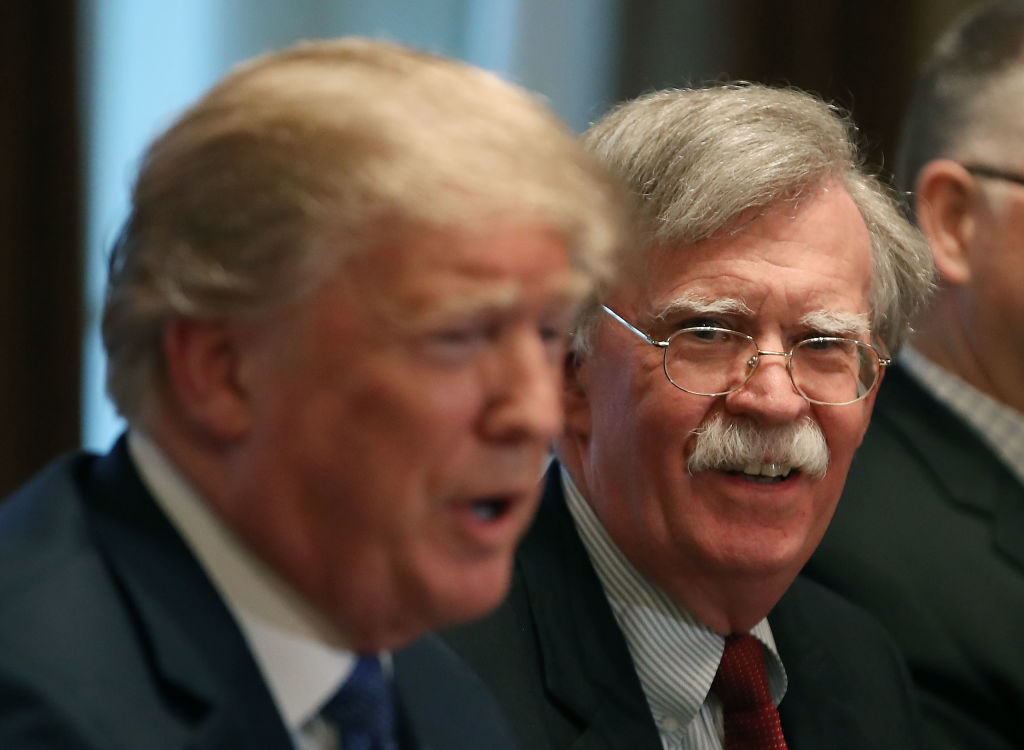 Instead, Trump has threatened to accelerate and “win” an arms race with nuclear-armed Russia and China as tensions with both states have grown. Trump has shunned a proposal supported by his own Defense and State departments to engage in strategic stability talks with Moscow. Trump also has ordered the termination of the 1987 Intermediate-Range Nuclear Forces Treaty without a viable plan B, and his national security team has dithered for more than a year on beginning talks with Russia to extend the 2010 New Strategic Arms Reduction Treaty (New START) before it expires in February 2021.
Instead, Trump has threatened to accelerate and “win” an arms race with nuclear-armed Russia and China as tensions with both states have grown. Trump has shunned a proposal supported by his own Defense and State departments to engage in strategic stability talks with Moscow. Trump also has ordered the termination of the 1987 Intermediate-Range Nuclear Forces Treaty without a viable plan B, and his national security team has dithered for more than a year on beginning talks with Russia to extend the 2010 New Strategic Arms Reduction Treaty (New START) before it expires in February 2021.





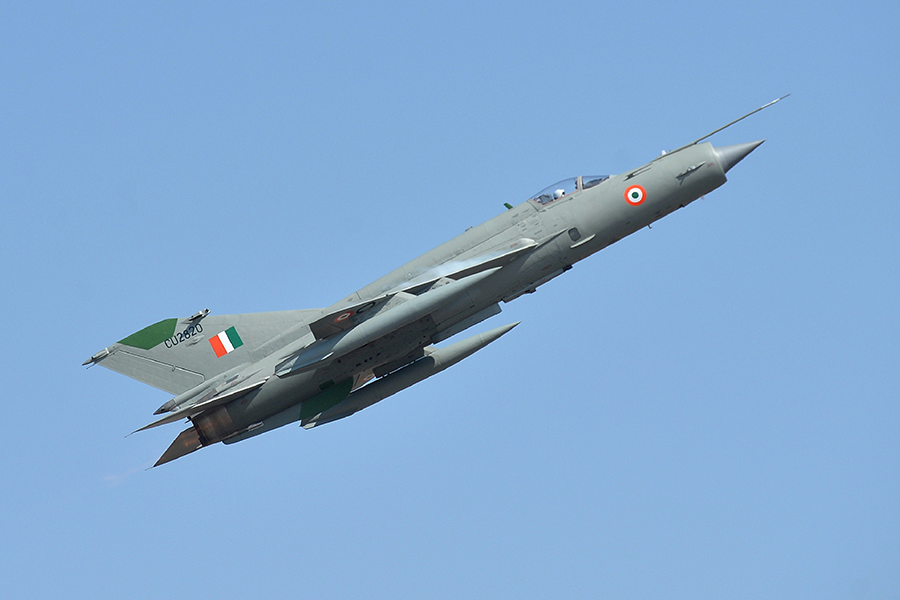 On February 14, Adil Ahmad Dar, a native of the Pulwama district in Indian Kashmir, ambushed a paramilitary convoy, killing 40 security personnel. The attack, which was claimed by the Pakistan-based terrorist outfit Jaish-e-Mohammed (JeM), was the deadliest terrorist incident in Kashmir in three decades.
On February 14, Adil Ahmad Dar, a native of the Pulwama district in Indian Kashmir, ambushed a paramilitary convoy, killing 40 security personnel. The attack, which was claimed by the Pakistan-based terrorist outfit Jaish-e-Mohammed (JeM), was the deadliest terrorist incident in Kashmir in three decades.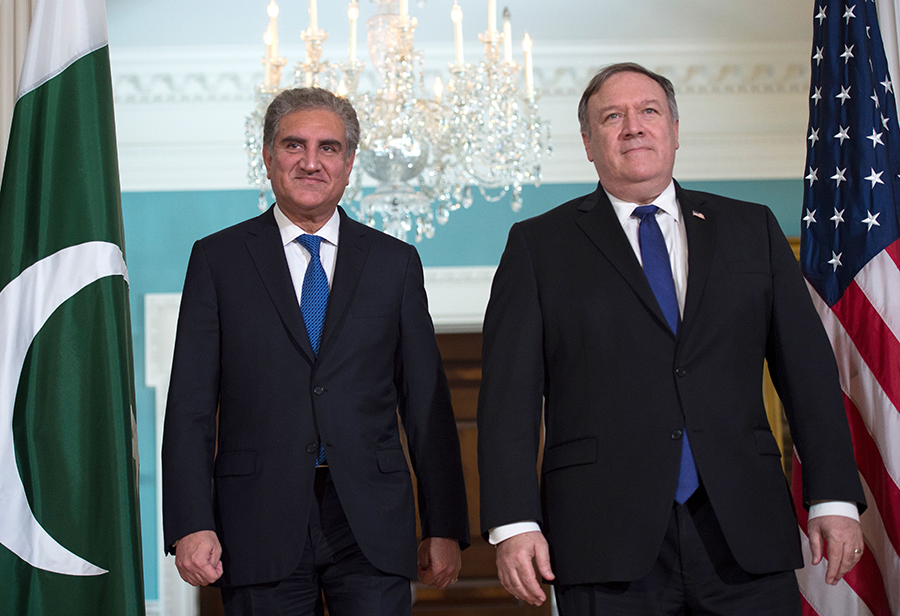 U.S. success in crisis management was historically a function of its unwavering commitment to de-escalation above other competing regional interests and alliance preferences. During the first post-nuclearization crisis, the Kargil conflict in 1999, the United States shocked Pakistan by setting aside Washington’s history of angst and mistrust with India to back New Delhi’s demand for a unilateral reversal of Pakistan’s unprovoked military incursion into Indian Kashmir. In the next two crises, the 2001–2002 military standoff on the international border and the 2008 Mumbai crisis, each triggered by terrorist attacks linked to Pakistan-based outfits, the United States played down the middle despite the fact that its position on global terrorism naturally aligned with India’s. It worried that a more partisan stance in India’s favor would embolden Indian leaders to use military force against Pakistan in retaliation to the terrorist strikes.
U.S. success in crisis management was historically a function of its unwavering commitment to de-escalation above other competing regional interests and alliance preferences. During the first post-nuclearization crisis, the Kargil conflict in 1999, the United States shocked Pakistan by setting aside Washington’s history of angst and mistrust with India to back New Delhi’s demand for a unilateral reversal of Pakistan’s unprovoked military incursion into Indian Kashmir. In the next two crises, the 2001–2002 military standoff on the international border and the 2008 Mumbai crisis, each triggered by terrorist attacks linked to Pakistan-based outfits, the United States played down the middle despite the fact that its position on global terrorism naturally aligned with India’s. It worried that a more partisan stance in India’s favor would embolden Indian leaders to use military force against Pakistan in retaliation to the terrorist strikes.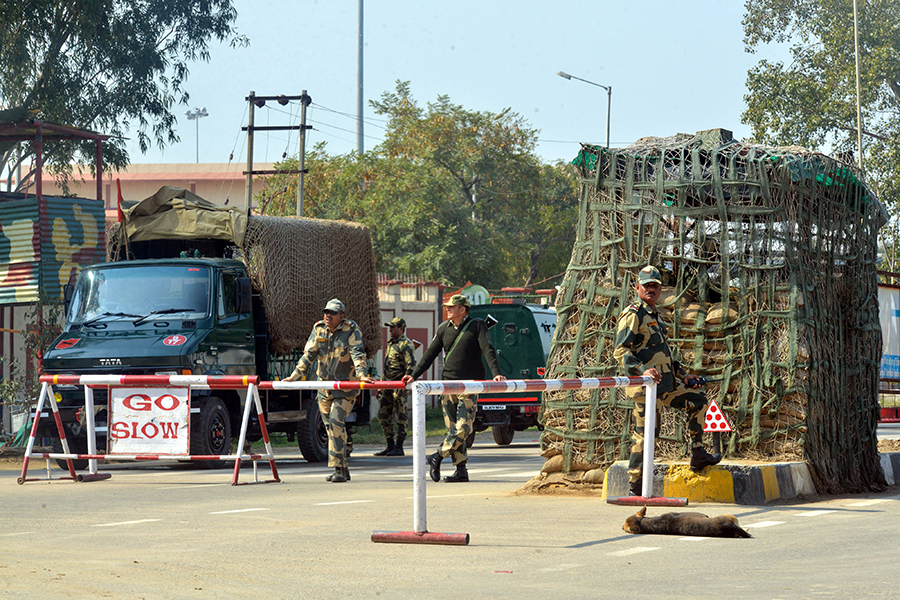 India’s choice of striking Pakistan beyond Kashmir, the first time since the 1971 war that led to Pakistan's break up and secession of its eastern half, also seems to have been influenced by the Uri crisis. By blaming Pakistan for the Pulwama attack, Modi de facto was accepting that, contrary to his promises, his post-Uri action did not deter militancy. More had to be done, especially with Indian elections looming, to make Modi’s response sellable at home and send a stern message to Pakistan. The solution: a strike beyond the disputed territory, but limited in scale to ensure that escalation remained controllable. To curry favor domestically, Modi exaggerated the damage of the attack. By all independent accounts, India struck a relatively barren target and the strike caused limited damage,
India’s choice of striking Pakistan beyond Kashmir, the first time since the 1971 war that led to Pakistan's break up and secession of its eastern half, also seems to have been influenced by the Uri crisis. By blaming Pakistan for the Pulwama attack, Modi de facto was accepting that, contrary to his promises, his post-Uri action did not deter militancy. More had to be done, especially with Indian elections looming, to make Modi’s response sellable at home and send a stern message to Pakistan. The solution: a strike beyond the disputed territory, but limited in scale to ensure that escalation remained controllable. To curry favor domestically, Modi exaggerated the damage of the attack. By all independent accounts, India struck a relatively barren target and the strike caused limited damage, For example, South Africa destroyed its nuclear weapons. Belarus, Kazakhstan, and Ukraine possessed nuclear weapons and transferred the warheads to Russia, a nuclear-armed state. Iraq and Libya ended nuclear weapons development programs. Other governments, including those of South Korea and Taiwan, abandoned the pursuit of nuclear weapons in response to U.S. pressure.
For example, South Africa destroyed its nuclear weapons. Belarus, Kazakhstan, and Ukraine possessed nuclear weapons and transferred the warheads to Russia, a nuclear-armed state. Iraq and Libya ended nuclear weapons development programs. Other governments, including those of South Korea and Taiwan, abandoned the pursuit of nuclear weapons in response to U.S. pressure. Following the 1991 war, the council adopted a series of resolutions requiring Baghdad to eliminate its nuclear weapons program and implement other steps to prevent the program’s reconstitution. These mandates supplemented Iraq’s NPT and safeguards agreement obligations. To verify Iraq’s compliance with these requirements, the resolutions augmented IAEA authority with powers that considerably exceeded those that the agency possessed under Iraq’s safeguards agreement.
Following the 1991 war, the council adopted a series of resolutions requiring Baghdad to eliminate its nuclear weapons program and implement other steps to prevent the program’s reconstitution. These mandates supplemented Iraq’s NPT and safeguards agreement obligations. To verify Iraq’s compliance with these requirements, the resolutions augmented IAEA authority with powers that considerably exceeded those that the agency possessed under Iraq’s safeguards agreement. The JCPOA not only reaffirmed Iran’s NPT and safeguards obligations, but also incorporated other important elements of the IAEA safeguards system in order to prevent Iranian reconstitution of its weapons program. For example, the agreement requires Iran to implement its additional protocol even though Iran has not yet ratified it—states normally conclude such protocols voluntarily—and to resume providing the IAEA with design notification of new nuclear facilities in accordance with the 1992 IAEA Board of Governors changes; Tehran had stopped providing this information in 2007.
The JCPOA not only reaffirmed Iran’s NPT and safeguards obligations, but also incorporated other important elements of the IAEA safeguards system in order to prevent Iranian reconstitution of its weapons program. For example, the agreement requires Iran to implement its additional protocol even though Iran has not yet ratified it—states normally conclude such protocols voluntarily—and to resume providing the IAEA with design notification of new nuclear facilities in accordance with the 1992 IAEA Board of Governors changes; Tehran had stopped providing this information in 2007. Nevertheless, Canberra has undermined these worthy positions with a veiled, paradoxical approach in which its leaders do not challenge the purposes and value of nuclear weapons, question the legality and legitimacy of such weapons, or even the logic and practice of nuclear deterrence. The nation leaves consideration of such issues entirely in the hands of the possessor states, compliantly accepting that they can safely manage nuclear risks through what they deem appropriate adjustments to warhead numbers, nuclear doctrines, and force postures.
Nevertheless, Canberra has undermined these worthy positions with a veiled, paradoxical approach in which its leaders do not challenge the purposes and value of nuclear weapons, question the legality and legitimacy of such weapons, or even the logic and practice of nuclear deterrence. The nation leaves consideration of such issues entirely in the hands of the possessor states, compliantly accepting that they can safely manage nuclear risks through what they deem appropriate adjustments to warhead numbers, nuclear doctrines, and force postures.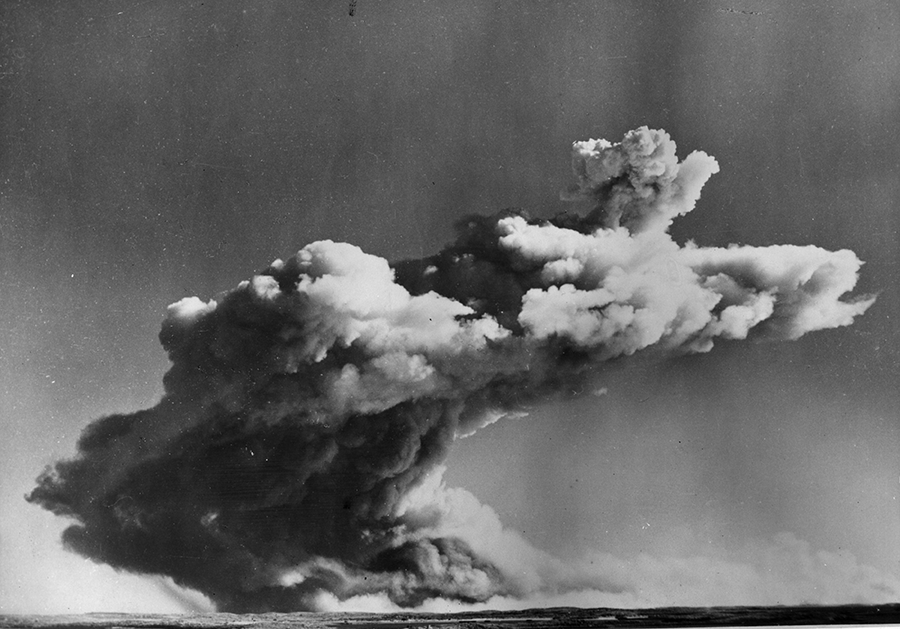 Other contributions are evident when looking at Australia’s role in supporting the CTBT by co-chairing with Japan the “Friends of the CTBT” foreign ministers’ meeting, which includes Canada, Germany, Finland, and the Netherlands, as well as being a lead sponsor of the annual UN General Assembly resolution on the CTBT. Canberra has demonstrated a concrete commitment to the CTBT by installing 21 of the treaty’s 300 monitoring facilities around the globe, the third-largest number of any state. Also, it has played a role in developing on-site inspection measures that could be used to assess possible nuclear tests.
Other contributions are evident when looking at Australia’s role in supporting the CTBT by co-chairing with Japan the “Friends of the CTBT” foreign ministers’ meeting, which includes Canada, Germany, Finland, and the Netherlands, as well as being a lead sponsor of the annual UN General Assembly resolution on the CTBT. Canberra has demonstrated a concrete commitment to the CTBT by installing 21 of the treaty’s 300 monitoring facilities around the globe, the third-largest number of any state. Also, it has played a role in developing on-site inspection measures that could be used to assess possible nuclear tests.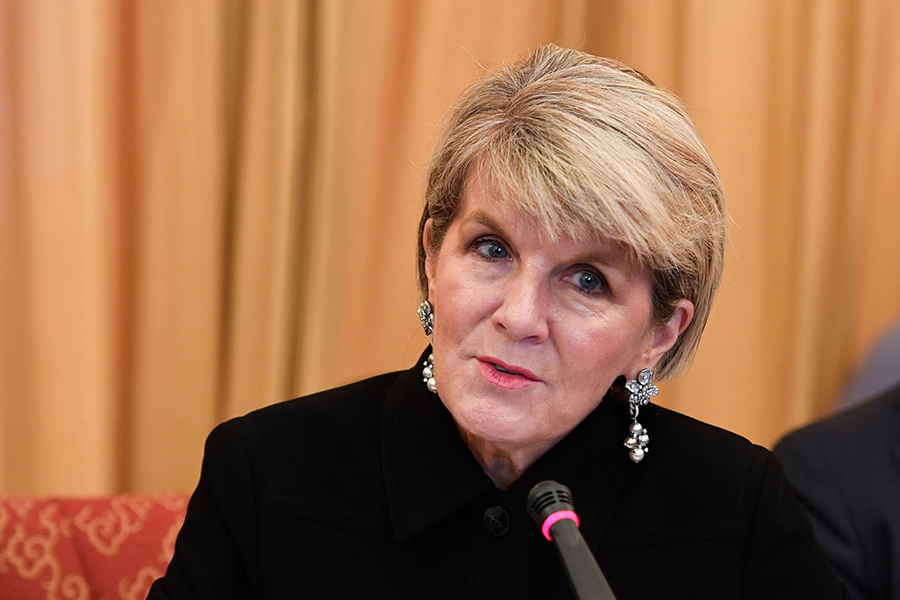 In late 2016, the UN General Assembly adopted a resolution containing a decision to convene a UN conference to negotiate a legally binding agreement to prohibit nuclear weapons that would ultimately lead toward their total elimination. Reflecting the views of the conservative Liberal party, the Australian government did not embrace the core premise that merely banning nuclear weapons would lead to their elimination or would alter “the current, real, security concerns of states with nuclear weapons or those states, like Australia, that rely on extended nuclear deterrence as part of their security doctrine.” In this regard, the government argued, “disarmament efforts must engage all the nuclear-armed states and must focus on practical measures that recognize both the humanitarian and security dimensions of this issue.”
In late 2016, the UN General Assembly adopted a resolution containing a decision to convene a UN conference to negotiate a legally binding agreement to prohibit nuclear weapons that would ultimately lead toward their total elimination. Reflecting the views of the conservative Liberal party, the Australian government did not embrace the core premise that merely banning nuclear weapons would lead to their elimination or would alter “the current, real, security concerns of states with nuclear weapons or those states, like Australia, that rely on extended nuclear deterrence as part of their security doctrine.” In this regard, the government argued, “disarmament efforts must engage all the nuclear-armed states and must focus on practical measures that recognize both the humanitarian and security dimensions of this issue.”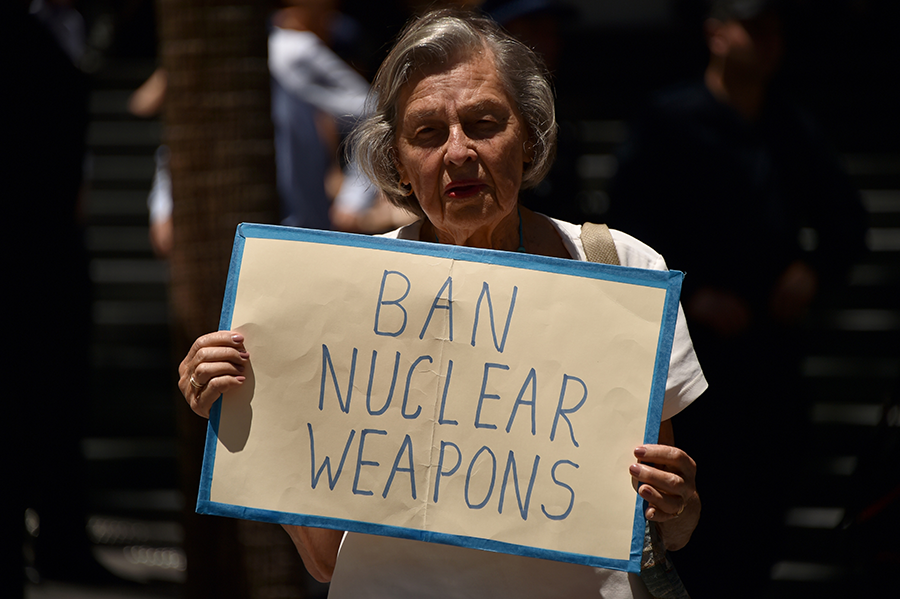 I was pleased to see that Paul Meyer's “Creating an Environment for Nuclear Disarmament: Striding Forward or Stepping Back?” (
I was pleased to see that Paul Meyer's “Creating an Environment for Nuclear Disarmament: Striding Forward or Stepping Back?” (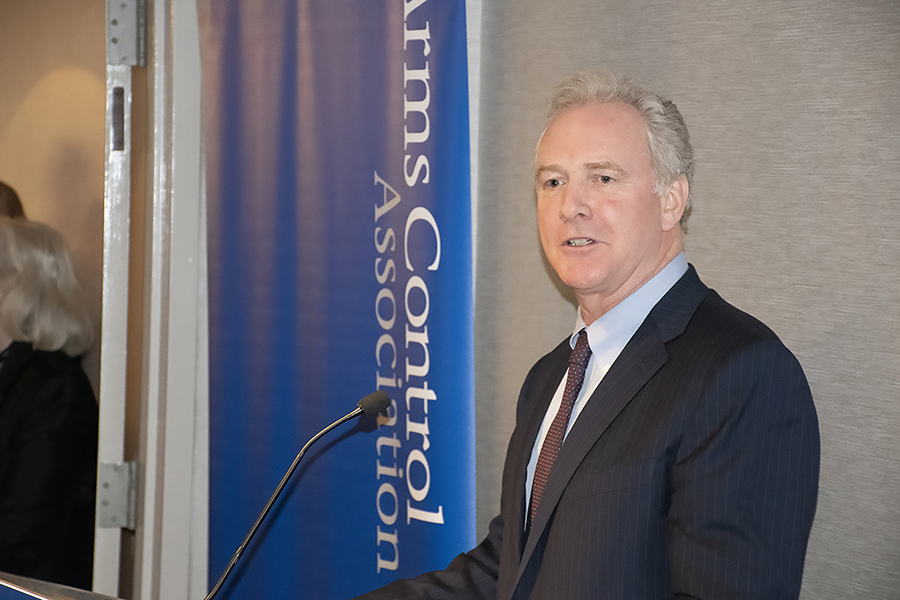 Part of my portfolio was NATO, and I worked on the ratification of the Intermediate-Range Nuclear Forces (INF) Treaty back in the day. Then the Berlin Wall came down. The Cold War ended. It was great news for the world; it was great news for the country. It ushered in a period of relative stability, including on arms control agreements, the most recent one being the New Strategic Arms Reduction Treaty (New START).
Part of my portfolio was NATO, and I worked on the ratification of the Intermediate-Range Nuclear Forces (INF) Treaty back in the day. Then the Berlin Wall came down. The Cold War ended. It was great news for the world; it was great news for the country. It ushered in a period of relative stability, including on arms control agreements, the most recent one being the New Strategic Arms Reduction Treaty (New START).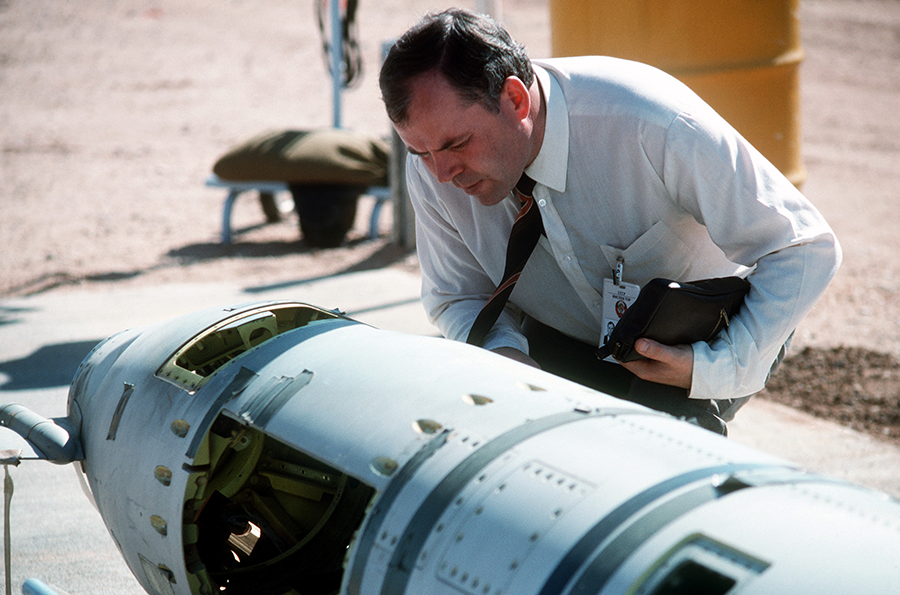 The funding proposal seeks more than twice what Congress provided last year and is likely to prove controversial in Congress. Democrats have criticized the administration’s treaty withdrawal plans and questioned the need for new missiles.
The funding proposal seeks more than twice what Congress provided last year and is likely to prove controversial in Congress. Democrats have criticized the administration’s treaty withdrawal plans and questioned the need for new missiles.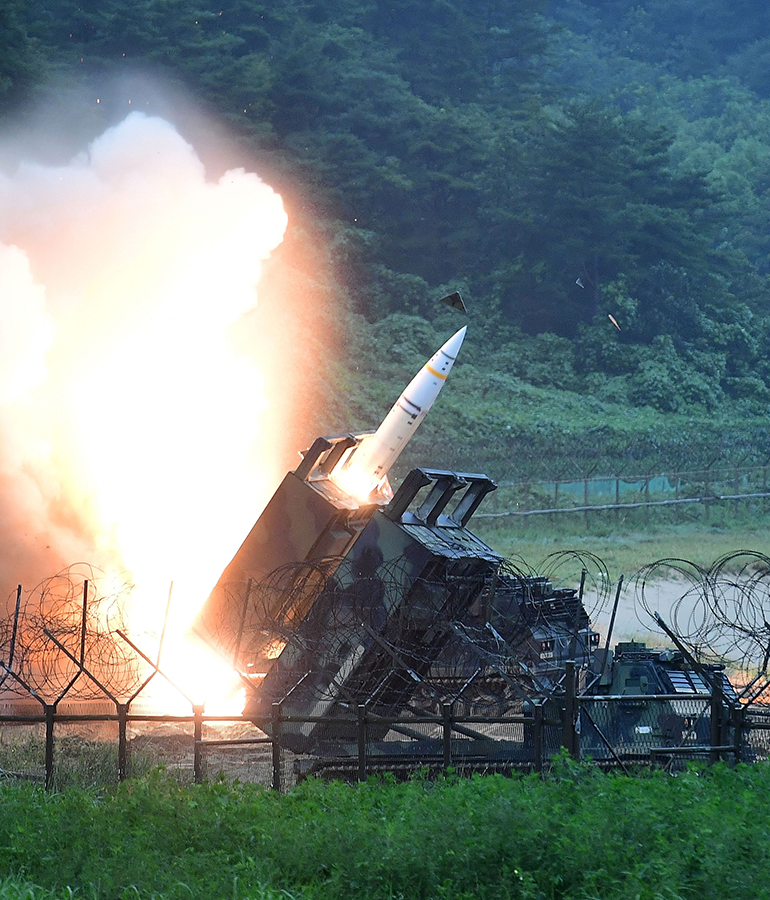 The budget documents do not specify the type or range of the missile, but the congressional aide confirmed that the weapon would fall within the range prohibited by the INF Treaty. The Defense Department classifies a medium-range missile as having a range between 1,000 and 3,000 kilometers.
The budget documents do not specify the type or range of the missile, but the congressional aide confirmed that the weapon would fall within the range prohibited by the INF Treaty. The Defense Department classifies a medium-range missile as having a range between 1,000 and 3,000 kilometers.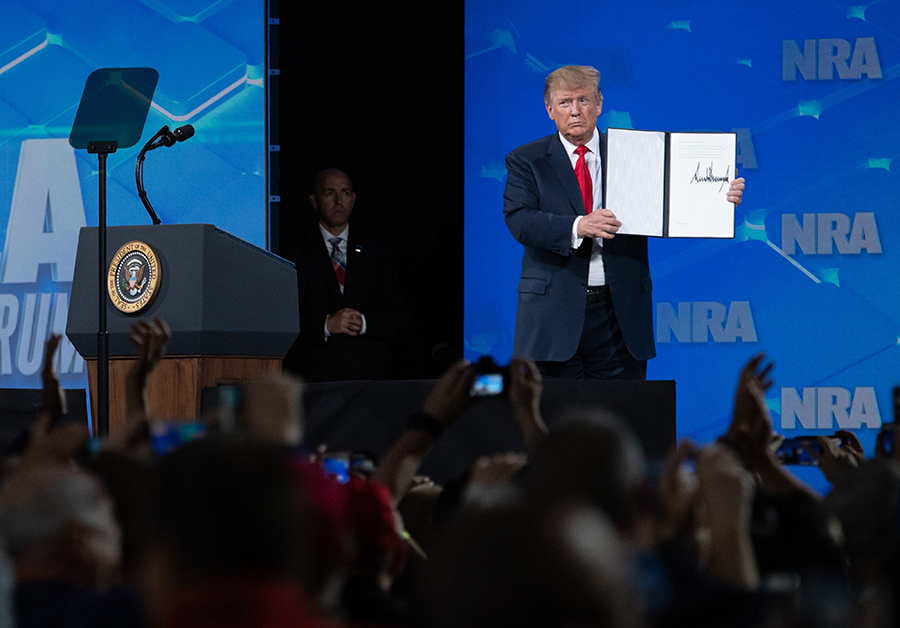 “The United States will be revoking the effect of America’s signature from this badly misguided agreement,” Trump told a large audience at the annual meeting of the National Rifle Association (NRA) in Indianapolis. “The United Nations will soon receive a formal notice that America is rejecting this treaty.”
“The United States will be revoking the effect of America’s signature from this badly misguided agreement,” Trump told a large audience at the annual meeting of the National Rifle Association (NRA) in Indianapolis. “The United Nations will soon receive a formal notice that America is rejecting this treaty.”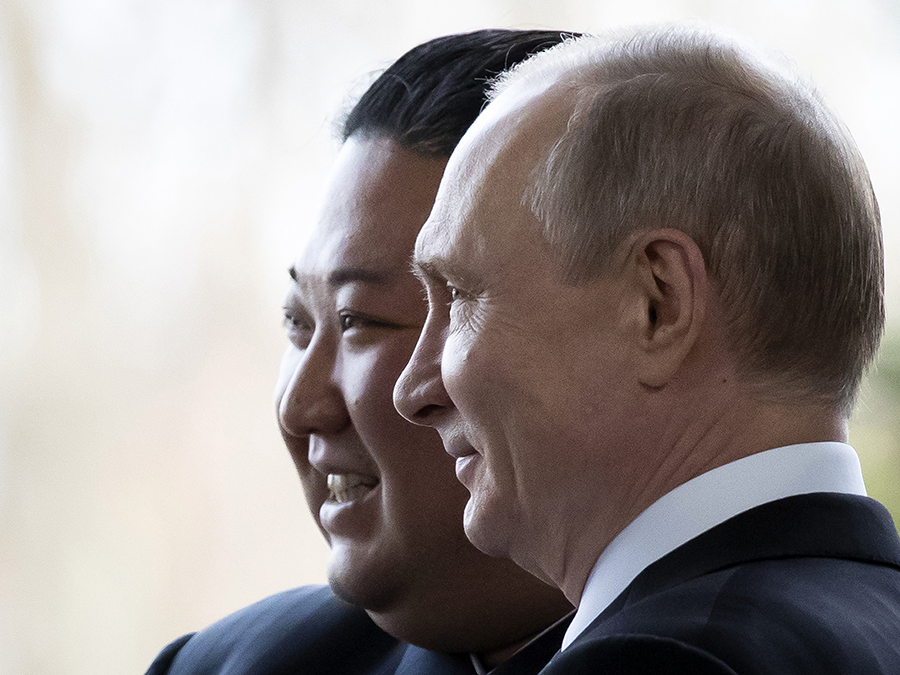 The Trump administration wants to see additional action from North Korea demonstrating its commitment to denuclearization, while Kim said Pyongyang will abandon the negotiations at the end of this year if the United States does not take a more flexible approach. It is unclear how the two sides will resolve this standoff over the process to advance talks.
The Trump administration wants to see additional action from North Korea demonstrating its commitment to denuclearization, while Kim said Pyongyang will abandon the negotiations at the end of this year if the United States does not take a more flexible approach. It is unclear how the two sides will resolve this standoff over the process to advance talks.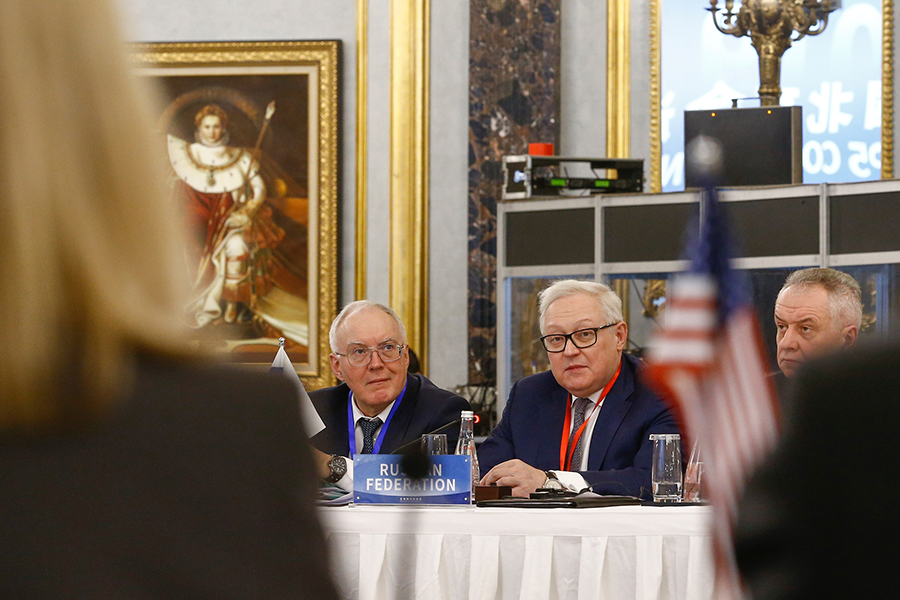 “The president has made clear that he thinks that arms control should include Russia and China and should include all the weapons, all the warheads, all the missiles,” said a senior White House official on April 25. “We have an ambition to give the president options as quickly as possible to give him as much space on the calendar as possible.”
“The president has made clear that he thinks that arms control should include Russia and China and should include all the weapons, all the warheads, all the missiles,” said a senior White House official on April 25. “We have an ambition to give the president options as quickly as possible to give him as much space on the calendar as possible.”